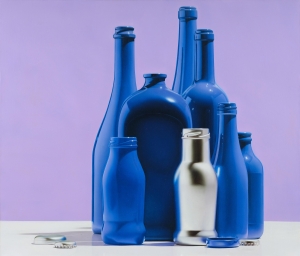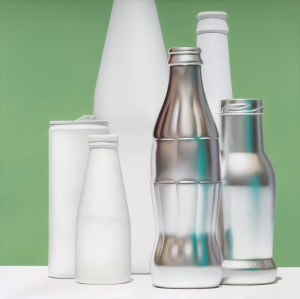Biography
David de Biasio was born in Jesolo, Italy, on August the 8th, 1973.
De Biasio's retinal education was formed in Italy, in close contact with Beauty and our great artistic and architectural tradition. And this seems evident also and above all from his aesthetic and expressive choices, in the adoption, at least until today, of the "Still life" as a privileged genre as well as for the proud, but never ostentatious or fundamentalist, sense of belonging to the noble one generation of painters deeply tied to the artisanal dimension of their "making art", to the indispensable and voluptuous "sensuality of contact with the canvas", are De Biasio's words, through brushes and oil colours. De Biasio in this sense is a painter deeply anchored in the Italian tradition, also and not only in his way of looking at and representing his reality. Attentive to tradition, yes, but also to its renewal: that "tradition of the new" precisely that characterizes our art from Giotto to today. In fact, if the tools of his work remain pure and traditional (blank canvases, frames, brushes, oil colors and varnishes), it is the study and elaboration of the image/subject that is enriched with new stimuli and new means, from photography digital to its computerized elaboration up to the projection onto the canvas, the latter exactly, but in a much more evolved way, as happened with the much scandalous optical camera of a van Eyck, a Leonardo or a Caravaggio.
De Biasio himself took his first steps in the world of painting by pursuing a classical realism that was anything but extreme. His visual revolution takes place in the United States, where he lived from 2003 to 2008, enriching his retinal abilities thanks to the contact with the varied and vivid New York artistic environment and, above all, with the direct encounter with the original Photorealism. This experience led the Italian painter not so much to ideological adherence to hyper-realistic conceptualism, but rather to technical learning, to purely pictorial insights aimed at achieving an extreme realism imbued with an Italian sense of Beauty. In "No logo" cycle, the potential "pop" trend given by the use of immediately recognizable bottles is transformed into a sort of reverse neo-Morandism, extreme, here implacable, inexorable, so arrogant in its perfection and in the astonishing play of light, shadows and reflections to dispel any attempt at hyper-realistic interpretation. The other intent, then, is clearly pursued through the systematic and total elimination of any logo or brand, "No logo" in fact, the latter being essential, primordial and inescapable elements of the Pop nature.
























